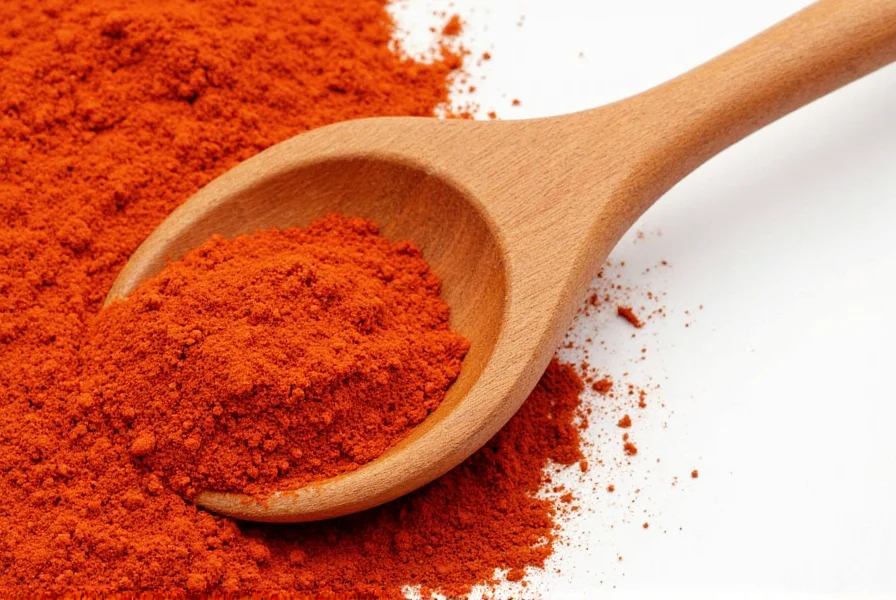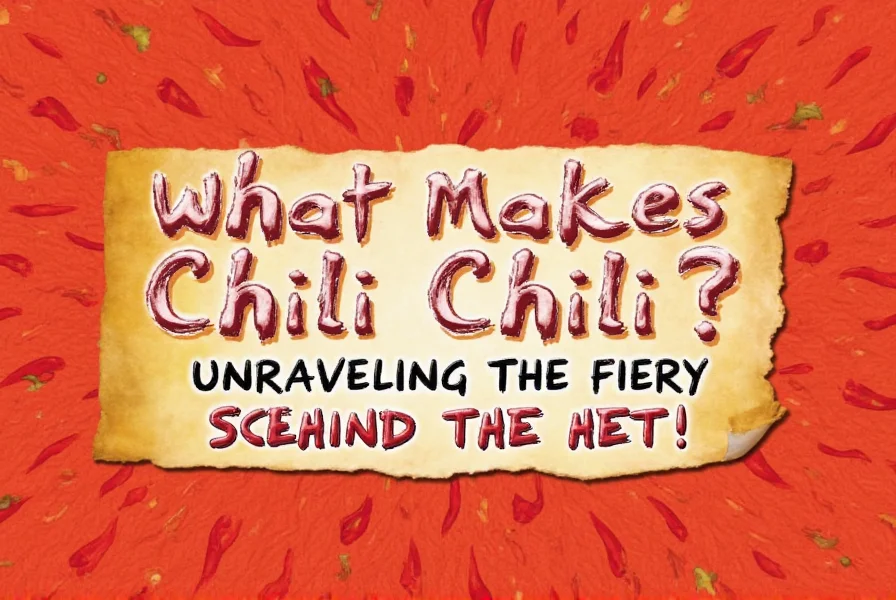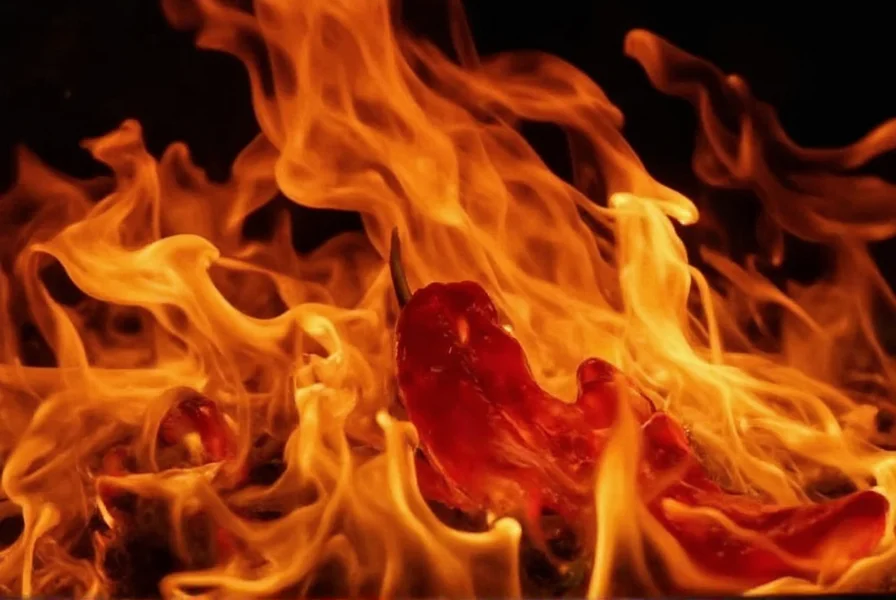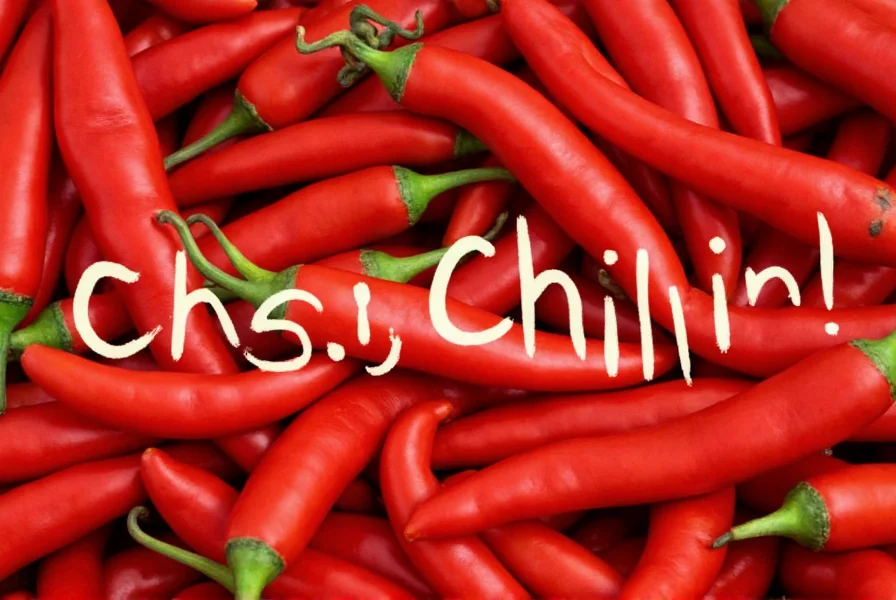Chili peppers derive their heat from capsaicin, a natural compound that triggers pain receptors in your mouth. This guide explains the science behind the burn, explores 7 chili varieties by heat level, and provides practical cooking tips for all skill levels.
Table of Contents
- The Secret Ingredient: Capsaicin Explained
- Chili Varieties: From Mild to Insane
- Why Do Chilies Exist Anyway?
- The Science Behind the Burn: How Your Body Reacts
- Spice Isn't Just About Heat: Flavor Meets Fire
- How to Use Different Chilies in Cooking
- Buying Guide: Choosing the Right Chili for You
- Frequently Asked Questions About Chilies
- Conclusion: Embrace the Burn
The Secret Ingredient: Capsaicin Explained

The real star behind the sting is a compound called capsaicin. Found mostly in the white pithy part (the placenta) and seeds of the chili, this oily, heat-resistant chemical doesn't just spice up your dish — it's a natural defense mechanism.
Interestingly, capsaicin affects mammals but not birds. That's why birds can eat chilies without feeling the burn and help spread the seeds far and wide. Clever, right?
- Capsaicin is responsible for most of the heat sensation in chilies.
- It binds to receptors that usually detect heat or irritation.
- It's fat-soluble, so drinking water won't help — milk does!
Chili Varieties: From Mild to Insane
| Pepper | Scoville Heat Units (SHU) | Tasting Notes | Best Used In |
|---|---|---|---|
| Red Bell Pepper | 0 SHU | Sweet, crisp, earthy | Stir-fries, salads, roasted dishes |
| Jalapeño | 2,500–8,000 SHU | Grassy, tangy, smoky when smoked | Salsas, nachos, stuffed poppers |
| Hatch Green Chile | 1,000–8,000 SHU | Roasty, earthy, slightly sweet | Enchiladas, green sauces |
| Cayenne | 30,000–50,000 SHU | Sharp, peppery, hot | Dried powder for soups, stews, rubs |
| Habanero | 100,000–350,000 SHU | Fruity, floral, citrusy | Sauces, marinades, tropical salsas |
| Ghost Pepper (Bhut Jolokia) | ~1,000,000 SHU | Smoky, earthy, punishingly hot | Extreme chile challenges, experimental cooking |
| Carolina Reaper | ~2,200,000 SHU | Fruity, sweet upfront, then pure fire | Contest-level heat, caution advised |
Why Do Chilies Exist Anyway?

Chilies evolved to deter certain animals from eating them — particularly mammals. The capsaicin triggers a painful response that teaches us not to munch on them again (unless we're gluttons for punishment).
Birds, on the other hand, love them! They don't have the same nerve receptors and help disperse chili seeds through their droppings. So, nature designed chilies to be spicy to protect themselves — and we humans decided to make it our culinary hobby.
The Science Behind the Burn: How Your Body Reacts
When you eat a chili, capsaicin latches onto TRPV1 receptors in your mouth — these are the sensors that detect physical heat and potential tissue damage. Your brain thinks you're burning, which triggers a release of endorphins — feel-good chemicals.
This explains why many people crave the burn. It's like a spicy rollercoaster ride for your nervous system. And over time, your body can build tolerance, making the same level of heat feel less intense.
- Capsaicin tricks your brain into thinking you're being burned.
- Your body releases endorphins — the "chili high" effect.
- Repeated exposure can lead to desensitization over time.
Spice Isn't Just About Heat: Flavor Meets Fire
Great chili isn't just about how much it burns — it's also about flavor complexity. Different varieties offer fruity, smoky, grassy, or even chocolatey notes that elevate your dish beyond the heat.
- Chipotle: Smoked jalapeños with rich, woody flavor.
- Guajillo: Dried, mild with berry-like undertones.
- Shishito: Lightly bitter with occasional surprise heat.
How to Use Different Chilies in Cooking
Choosing the right chili for your recipe can make or break the dish. Here's a quick guide:
- Mild & Sweet: Bell peppers, Anaheim – perfect for roasting, stuffing, or adding color.
- Medium Heat: Jalapeños, Serranos – ideal for fresh salsas and pickling.
- High Heat: Cayenne, Thai bird's eye – used in pastes and fiery curries.
- Ultra Hot: Ghost Pepper, Carolina Reaper – use sparingly in sauces and specialty dishes.
Buying Guide: Choosing the Right Chili for You

Whether you're shopping at your local grocery store or a specialty market, here are some pro tips to help you choose the best chilies for your taste buds and cooking needs.
Top Picks for Home Cooks
- Product: Fresh Jalapeño Peppers (Packs of 10)
- Features: Firm skin, consistent size, moderate heat.
- Advantages: Great for slicing, stuffing, or pickling.
- Use Cases: Salsas, nachos, chili poppers.
- Target Audience: Casual cooks, snack lovers, taco fans.
- Suitable Occasions: Weeknight dinners, parties, game nights.
- Product: Dried Guajillo Chilies (Bulk Bag)
- Features: Rich red color, mild to medium heat, easy rehydration.
- Advantages: Versatile for sauces, moles, soups.
- Use Cases: Mexican cuisine staples like enchilada sauce.
- Target Audience: Home chefs experimenting with traditional recipes.
- Suitable Occasions: Weekend cooking projects, family meals.
- Product: Crushed Red Pepper Flakes
- Features: Pre-crushed, easy to sprinkle, adjustable heat level.
- Advantages: No prep needed; instant spice boost.
- Use Cases: Pizza, pasta, soups, grilled meats.
- Target Audience: Busy cooks looking for convenience.
- Suitable Occasions: Everyday meals, quick fixes, snacking bowls.
Things to Watch For When Buying Chilies
- Freshness: Look for firm, unblemished skin. Wrinkled or soft peppers may be past their prime.
- Heat Level: Check Scoville ratings if available or ask vendors for recommendations.
- Storage: Store whole fresh chilies in the fridge for up to a week, or freeze for longer use.
- Handling: Wear gloves when cutting extremely hot chilies to avoid skin irritation.
Frequently Asked Questions About Chilies
What makes chili peppers spicy?
The spiciness in chili peppers comes from a compound called capsaicin, which is concentrated in the white pith (placenta) and seeds of the pepper. Capsaicin binds to TRPV1 receptors in your mouth that detect heat and potential tissue damage, tricking your brain into thinking you're experiencing actual heat or burning.
Why do chilies contain capsaicin?
Capsaicin evolved as a defense mechanism in chilies. It deters mammals (who would crush the seeds when eating) from consuming the peppers, while birds (who don't feel the burn) can eat them and disperse the seeds intact through their droppings. This evolutionary adaptation helps chilies propagate more effectively.
What is the Scoville scale and how does it work?
The Scoville scale measures the heat level of chili peppers in Scoville Heat Units (SHU). Developed by Wilbur Scoville in 1912, it originally involved diluting pepper extract until the heat was no longer detectable by human testers. Today, high-performance liquid chromatography (HPLC) is used to measure capsaicin concentration more accurately. The higher the SHU number, the hotter the pepper.
Why doesn't water help with chili burn?
Water doesn't help with chili burn because capsaicin is fat-soluble, not water-soluble. Drinking water actually spreads the capsaicin around your mouth. Dairy products like milk work better because the casein protein binds to capsaicin and helps wash it away. Fatty foods, bread, or even sugary drinks can also help alleviate the burn.
How can I reduce the heat of a dish that's too spicy?
To reduce spiciness in a dish: add dairy (milk, yogurt, sour cream), sugar or honey, acid (lime juice, vinegar), or starch (bread, rice, potatoes). You can also increase the volume of the dish by adding more non-spicy ingredients. Remember that capsaicin is oil-soluble, so fatty ingredients are particularly effective at binding with and neutralizing the heat.
Are hotter chilies less flavorful?
Not necessarily. While extremely hot chilies like the Carolina Reaper get attention for their heat, many hot varieties also have complex flavor profiles. Habaneros offer fruity, floral notes; chipotles provide smoky depth; and even ghost peppers have distinctive earthy flavors. In fact, many chili enthusiasts seek out specific varieties for their unique tastes beyond just heat level.
Can you build a tolerance to spicy food?
Yes, you can build tolerance to spicy food through repeated exposure. When you eat capsaicin regularly, your TRPV1 receptors become temporarily desensitized. This is why people who regularly eat spicy food can handle higher heat levels over time. However, this tolerance can decrease if you stop consuming spicy foods for an extended period.
Why don't birds feel the heat from chilies?
Birds don't feel the heat from chilies because they lack the specific TRPV1 receptor variant that mammals have. This evolutionary difference allows birds to eat chilies without experiencing the burning sensation, making them effective seed dispersers since they don't crush the seeds when eating and can transport them over long distances through their droppings.
What's the difference between chilies and peppers?
The terms are often used interchangeably, but technically 'chili' (or 'chile') refers specifically to peppers that contain capsaicin and have heat, while 'pepper' is a broader term that includes both hot chilies and sweet varieties like bell peppers. In culinary contexts, 'chili' often refers to the spicy varieties, while 'pepper' might refer to both spicy and non-spicy types depending on regional usage.
How do I safely handle extremely hot chilies?
When handling extremely hot chilies, wear gloves to prevent skin irritation, avoid touching your face (especially eyes), and work in a well-ventilated area. After handling, wash your hands thoroughly with soap and water, and clean all surfaces and tools that contacted the chilies. Consider using utensils rather than fingers when seeding hot peppers, and never rub your eyes after handling hot chilies.
Conclusion: Embrace the Burn
Chili peppers offer a fascinating blend of science, evolution, and culinary artistry. Whether you're new to spicy foods or a seasoned enthusiast, understanding capsaicin's role and variety differences unlocks endless flavor possibilities.
Start with mild bell peppers, experiment with jalapeños in salsas, and gradually explore hotter varieties. Remember: the perfect chili for you depends on your taste preferences and cooking goals — so embrace the journey one bite at a time!











 浙公网安备
33010002000092号
浙公网安备
33010002000092号 浙B2-20120091-4
浙B2-20120091-4